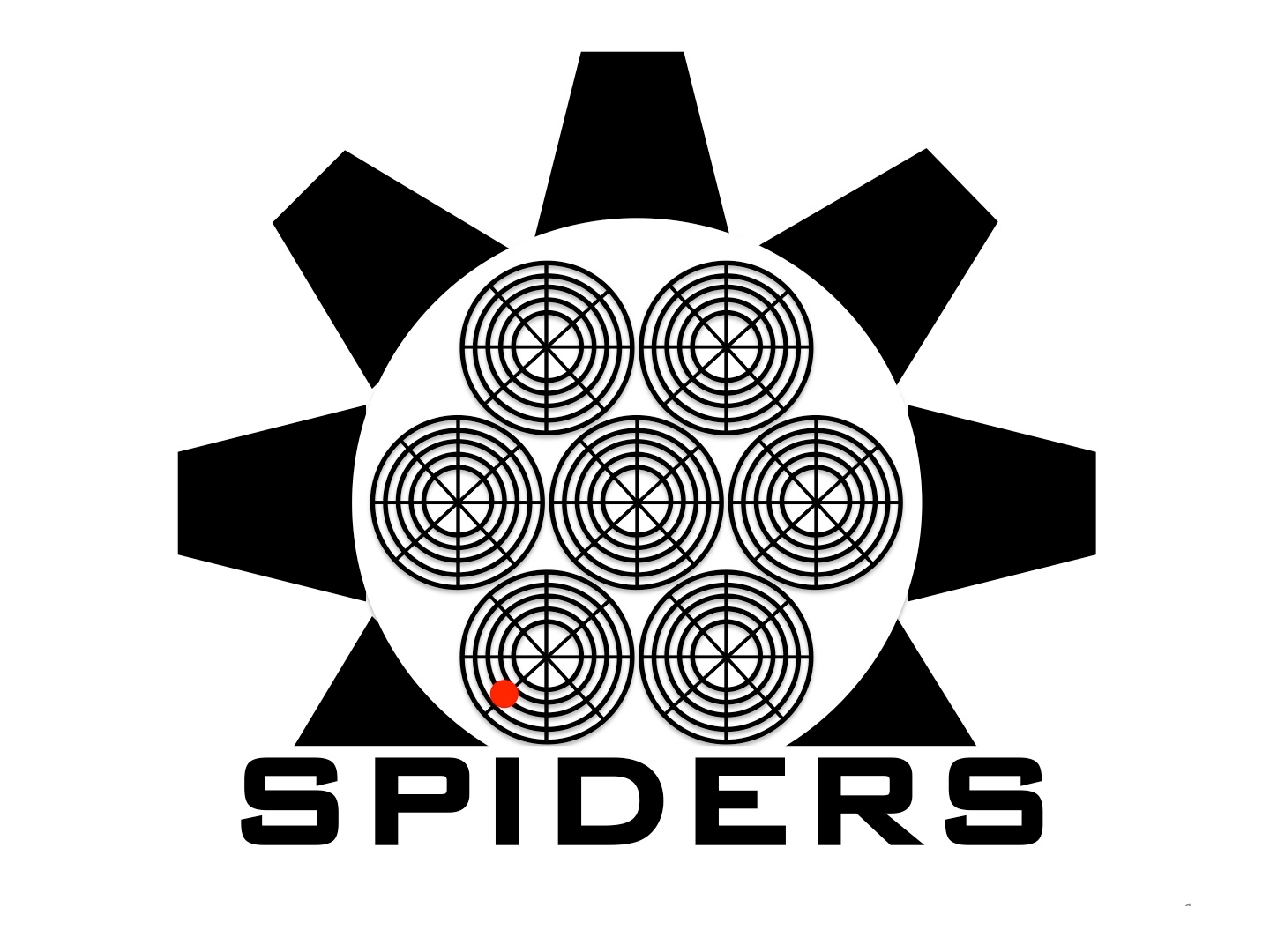SPIDERS Target Selection
Summary
The SPectroscopic IDentification of ERosita Sources (SPIDERS) is an SDSS-IV eBOSS subprogram to provide complete and homogeneous optical spectroscopic followup of X-ray sources (both point-like and extended).
Before availability of eROSITA sources, SPIDERS spectroscopic targets are selected by combining X-ray information from the RASS (ROSAT all-sky survey) and XMM-Newton serendipitous surveys to SDSS multi-band photometric data; a detailed description of such targeting scheme can be found in Clerc et al. (2016) and Dwelly et al. (2017), for clusters of galaxies and AGN, respectively.
SPIDERS AGN
The counterparts to X-ray point-sources were identified by means of a Bayesian cross-matching algorithm (Salvato et al., in prep.) to find the best association between ROSAT all-sky survey (RASS, Voges et al. 1999, 2000) or XMM Slew Survey (XMMSL, Saxton et al. 2008) sources and detections from the AllWISE catalogue (Cutri et al. 2013). The X-ray bright AGN detected in RASS and XMMSL are expected to be bright and red in the two shortest wavelength WISE channels (W1 3.4 μm; W2 4.6 μm) and to be relatively unaffected by dust obscuration. The SPIDERS AGN target list contains 9,028 candidate targets from RASS and 819 from XMMSL, over the entire BOSS imaging footprints. The target selection catalogs contain information on the X-ray sources, including flux measurements, and on their AllWISE counterpart. They enclose a quantitative measure of the reliability of the association.
SPIDERS Galaxy Clusters
The counterparts to X-ray extended sources (galaxy clusters) were identified using a red-sequence finding algorithm adapted from redMaPPer (Rykoff et al. 2014). X-ray sources were either faint RASS sources filtered for the existence of a neighboring red-sequence, or extended sources on XMM-Newton archival pointings matched to a redMaPPer detection. Both extend to redshift z∼0.6. The target list contains galaxies likely to belong to a galaxy cluster, as indicated by their color, distance to the center of the X-ray source and luminosity. They are prioritized according to a scheme involving their membership probability and their parent cluster mass (as indicated from its richness.) The SPIDERS Galaxy Cluster target list contains 94,883 and 3,839 objects for RASS and XMM-Newton respectively.
SEQUELS SPIDERS targeting
SDSS fibers are also used as part of the SEQUELS survey (Alam et al. 2014). Details on the SEQUELS target selection can be found on this page. The selection of SPIDERS targets in SEQUELS slightly differs from the main SPIDERS selection.
SEQUELS AGN
X-ray sources from the RASS are associated to SDSS DR9 photometric detection using a Bayesian algorithm, with priors on the u- and r-band distribution derived from a catalogue of X-ray bright sources detected by the XMM-Newton observatory, see appendix D of Dwelly et al. (2017) for the full details.
SEQUELS Clusters
Red-sequence galaxies associated to RASS X-ray sources are targeted up to ifiber2=21.0 and low-richness galaxy clusters are included in the target list.
Value-added catalogs
Validated cluster sample catalogs are available here: for DR13 and for DR14.
Brightest Cluster Galaxies properties are available in this DR14 VAC.
Validated DR14 AGN catalogs are compiled in two VACs, based on RASS and on XMM slew.
Optical emission line properties and black hole mass estimates for DR14 AGN are available in this VAC.



